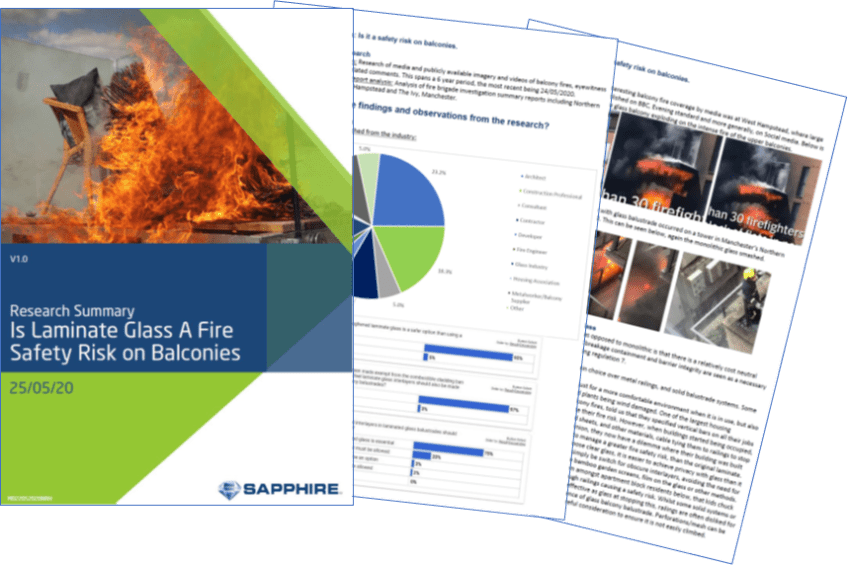The ban means that cladding and balconies on buildings over 18m high (as at 22-05-2020) will have to be of limited enough combustibility, achieving class no less than A2-s1, d0 or Class A1 (under the European classification system set out in the standard BS EN 13501-1) subject to exemptions. Laminate glass is an exemption if used in “Windows made out of glass and transparent and associated window frame including glazing, features, fixings and ironmongery”, however, it is not listed as an exemption for balustrades or balconies. It is therefore assumed banned thus driving the need for this research report to analyse this point.
Sapphire have been advocates for many years for using laminate glass. We acknowledge that there have been a number of tragic incidents associated with monolithic balustrades, like the Sheffield tragedy (where a young child fell from a roof terrace). The use of monolithic glass in balustrades has meant that, post breakage, a large area of the balustrade had no form of guarding, impacting life safety. For this reason, Sapphire has advocated the industry moving away from monolithic glass to laminate glass to improve post-breakage barrier integrity.
During this research, we have spoken to many of the key players in the glass industry and within construction. We have researched every fire brigade in the UK to get a full picture of balcony fires and conducted various laminate glass tests to test the products in isolation and in full balcony scenarios. We have also been involved in other confidential laminate glass research with specialist test labs in the UK.

We have led various construction industry roundtable discussions on fire in London, Manchester and Reading. As well as conducting independent research into construction